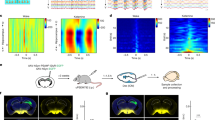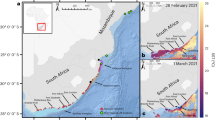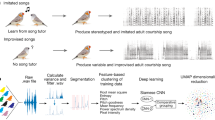Abstract
Electroreceptors with sensitivity in the microvolt range, which mainly function to detect live prey, are well known in phylogenetically old fishes and some amphibians1–4. In African mormyriform and South American gymnotiform fishes this sense has evolved to an active system using an electric organ as a source for impedance measurement of the environment and for communication5,6. Electroreception in higher vertebrates has not previously been reported. Here we establish that the platypus, the Australian nocturnal diving monotreme, can locate and avoid objects on the basis of d.c. fields. High–frequency sensitivity to a.c. could allow the detection of muscle activity of animals, such as crustaceans, which are preyed on by the platypus. Recordings of cortical evoked potentials showed that the bill of the platypus, previously considered to be exclusively mechanoreceptive7–9, is also an electroreceptive organ with behavioural and electrophysiological sensitivity of ∼50 µV cm−1. Several lines of evidence suggest that electroreception has evolved independently in this monotreme.
This is a preview of subscription content, access via your institution
Access options
Subscribe to this journal
Receive 51 print issues and online access
$199.00 per year
only $3.90 per issue
Buy this article
- Purchase on Springer Link
- Instant access to full article PDF
Prices may be subject to local taxes which are calculated during checkout
Similar content being viewed by others
References
Bullock, T. H. A. Rev. Neurosci. 5, 121–170 (1982).
Fritzsch, B. & Wahnschaffe, U. Cell Tissue Res. 229, 483–503 (1983).
Kalmijn, A. J. in Handbook of Sensory Physiology Vol. III/3, 147–200 (Springer, Berlin, 1974).
Scheich, H. in Biophysics, 764–776 (Springer, Berlin, 1983).
Heiligenberg, W. Principles of Electrolocation and Jamming Avoidance in Electric Fish (Springer, Berlin, 1977).
Scheich, H. & Bullock, T. H. in Handbook of Sensory Physiology Vol. III/3 201–256 (Springer, Berlin, 1974).
Bohringer, R. C. & Rowe, M. J. J. comp. Neurol. 174, 1–14 (1977).
Poulton, E. B. J. Physiol., Lond. 5, 15–16 (1885).
Wilson, J. T. & Martin, C. J. Linn. Soc. NSW, Macleay mem. Vol., 190–200 (1893).
Digkgraaf, S. & Kalmijn, A. J. Z. vergl. Physiol. 47, 438–456 (1963).
Himstedt, W., Kopp, J. & Schmidt, W. Naturwissenschaftern 69, 552 (1982).
Crowther, A. B. Pap. Proc. R. Soc. Tasm., 96–99 (1879).
Faragher, R. A., Grant, T. R. & Carrick, F. N. Aust. J. Ecol. 4, 171–179 (1979).
Grant, T. R., Williams, R. & Carrick, F. N. Aust. Zool. 19, 117–124 (1977).
Andres, K. H. & von Düring, M. in Sensory Receptor Mechanisms 81–89 (World Science, Singapore, 1984).
Münz, H., Claas, B. & Fritzsch, B. J. comp. Physiol. A 154, 33–44 (1983).
Bennett, M. V. L. in Fish Physiology, 492–600 (Academic, London, 1971).
Szabo, T. in Handbook of Sensory Physiology Vol. III/3, 13–58 (Springer, Berlin, 1974).
Author information
Authors and Affiliations
Rights and permissions
About this article
Cite this article
Scheich, H., Langner, G., Tidemann, C. et al. Electroreception and electrolocation in platypus. Nature 319, 401–402 (1986). https://doi.org/10.1038/319401a0
Received:
Accepted:
Published:
Issue Date:
DOI: https://doi.org/10.1038/319401a0
This article is cited by
-
Long-range and high-precision localization method for underwater bionic positioning system based on joint active–passive electrolocation
Scientific Reports (2023)
-
Active cloaking and illusion of electric potentials in electrostatics
Scientific Reports (2021)
-
Extracting physiological information in experimental biology via Eulerian video magnification
BMC Biology (2019)
-
Molecular basis of ancestral vertebrate electroreception
Nature (2017)
-
Passive electroreception in aquatic mammals
Journal of Comparative Physiology A (2013)
Comments
By submitting a comment you agree to abide by our Terms and Community Guidelines. If you find something abusive or that does not comply with our terms or guidelines please flag it as inappropriate.



